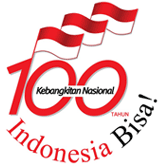Indonesia celebrates its Mother’s Day, known as Hari Ibu, on Dec. 22. Mother’s Day is celebrated on various days in many parts of the world, most commonly in March, April or May,
as a day to honor mothers and
motherhood.
as a day to honor mothers and
motherhood.
In most countries Mother’s Day is a recent observance derived from the holiday as it evolved in the United States. When adopted by other countries and cultures it was given different meanings, associated to different religious, historical and legendary events, and celebrated on different dates.
Indonesia’s Mother’s Day contains many historical, philosophical and cultural meanings. It is the day of the first Indonesian Women’s Congress held on Dec. 22-26 in 1928, in Yogyakarta.
The Congress passed an important resolution calling for improvements to women’s access to education, the provision of better information at the time of marriage and on women’s divorce rights.
The idea to make the day official started during the third Indonesian Women’s Congress in 1938. In the spirit of national integration, the Congress led to the formation of a federation known as Kongres Wanita Indonesia (KOWANI), a broad-based umbrella organization of more than 75 women’s organizations.
Feminist organizations in Indonesia have existed since 1912 with the formation of the first women’s organization, Poetri Mardika, and inspired by Indonesian heroines of the 19th century who promoted women’s rights and fought against colonialism, such as Raden Adjeng Kartini, Tri Buana Tungga Dewi, Martha Christina Tiahahu, Cut Nyak Dhien, Cut Meutia, Maria Walanda Maramis, Dewi Sartika, Nyai Ahmad Dahlan, Rasuna Said and Nyi Ageng Serang.
Indonesia’s Mother’s Day originally aimed to celebrate the spirit of Indonesian women and to improve the condition of the nation. Today, Mother’s Day is celebrated by expressing love and gratitude
to mothers.
to mothers.
People always associate it with wearing national dresses, holding various competitions and allowing mothers to be free from their routine daily duties at home.
The role of mothers is highly treasured. We could not imagine how a family would be without mothers performing their roles and responsibilities. There are countless tasks that fall to mothers, from birthing, nursing, diapering, nose-wiping and nurturing.
According to the old maxim, a woman’s work is never done. As stated by political economist Marilyn Waring, a former New Zealand parliamentarian, woman’s work as unpaid labor makes all of the rest of work possible and the market wouldn’t survive if it wasn’t able to survive on the backbone of unpaid work.
Waring calculates that unpaid labor is the largest contributor of any economy, and all around the world most of that work is performed by women.
According to the United Nations, although women make up half the world’s population, they own only 1 percent of its wealth. Today the majority of women become mothers — approximately more than 80 percent globally.
Due to the invisibility and marginality of mothers’ work, Andrea O’Reilly, a women’s studies professor at Toronto’s York University started the Motherhood Initiative for Research and Community Involvement (MIRCI), which is the newly launched feminist scholarly and activist organization on motherhood, developed from the former Association for Research on Mothering at York University (1998-2010).
MIRCI’s activities include convening conferences, publishing journals, organizing Mother Outlaw’s community gatherings, and holding informal discussion groups on mothering and motherhood.
According to many feminists, motherhood is the unfinished business of the feminist movement, and nowadays higher attention is given to mothering and motherhood.
Nothing compares to what mothers do daily. What they do is priceless and dignified. An Islamic adage says that “heaven lies at Mother’s feet”.
This implies children be obedient and respectful to their mothers because mothers always want and pray for the best for their children.
On this precious Mother’s Day, let us respect and love our mothers more and more. Their love keeps showering their families every single second. Selamat Hari Ibu.
















Join With Us Community